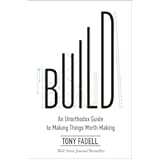Mastering Your Finances: The Ultimate Guide to Saving Money on a Tight Budget
Navigating a tight budget can feel like an uphill battle, but it doesn’t have to be. As highlighted in the insightful video above featuring Chinkee Tan, tackling financial challenges head-on is crucial for achieving long-term stability and growth. This comprehensive guide expands on those core principles, offering practical strategies and actionable steps to help you not only manage but thrive, even when your budget is stretched thin.
The Hidden Costs of Neglecting Your Budget
Ignoring financial problems doesn’t make them disappear; it allows them to escalate, impacting every aspect of your life. As eloquently stated, “Pag hindi mo hinarap ang problema, lalaki ang problema, hindi ma-solve ang iyong problema.” The repercussions of not actively managing your money extend far beyond simply lacking funds. They manifest in increased stress and anxiety, creating a vicious cycle of financial pressure that can be debilitating.
Furthermore, a lack of financial foresight can severely limit your opportunities for personal and financial growth. When you’re constantly reacting to immediate needs without a clear plan, your potential remains untapped. This reactive approach also makes it incredibly difficult to achieve both short-term goals, like building an emergency fund, and long-term aspirations, such as homeownership or a secure retirement.
Perhaps one of the most significant consequences is the propensity for making poor financial decisions under stress. Research indicates that when individuals are under significant financial strain, an alarming 90% of decisions made are likely to be wrong, leading to regrets that can last a lifetime. This stress not only affects your quality of life but also strains relationships with loved ones and impacts your ability to support those who depend on you. Proactive financial management, particularly when dealing with a tight budget, is therefore not just about money; it’s about holistic well-being.
Evaluating Your Spending: The First Step to Control
Before any meaningful change can occur, you must first understand your current financial landscape. This means meticulously evaluating your spending habits. Many people estimate their monthly expenses, often inaccurately, which prevents precise financial planning. The key is to be specific, as money itself is specific.
Begin by listing every single expense for at least a month. This can be done using a notebook, a spreadsheet, or a budgeting app. Categorize these expenses into two distinct sections: ‘Needs’ and ‘Wants.’ Needs are essential for survival and daily functioning (e.g., rent, utilities, groceries, transportation, basic medication). Wants are discretionary items that improve your quality of life but aren’t strictly necessary (e.g., dining out, entertainment, designer coffee, impulse purchases, high-end gadgets).
Once your expenses are meticulously itemized, compare your total income to your total expenses. If your expenses outweigh your income, it’s a clear signal that adjustments are needed. Start by ruthlessly cutting back on your ‘Wants’ section. For example, if you frequently eat out or buy expensive coffee, consider reducing these habits. The video points out that an average family eating out once a week at P1,000 per meal could spend P48,000 annually on this single “want.” By reducing this to just once a month, you could save a substantial P36,000 per year.
Prioritize critical needs such as rent, utilities, groceries, and essential education or medical expenses. By gaining clarity on where every peso goes, you empower yourself to make informed decisions and identify areas for significant savings.
Crafting Your Budget: A Roadmap to Financial Freedom
After evaluating your spending, the next crucial step is to create a realistic and actionable budget. A budget isn’t about restriction; it’s about intentional allocation of your resources to align with your financial goals, especially when operating on a tight budget. There are several budgeting methods you can explore:
- The 50/30/20 Rule: Allocate 50% of your income to needs, 30% to wants, and 20% to savings and debt repayment. This is a popular and straightforward approach.
- Zero-Based Budgeting: Every peso of your income is assigned a job (expense, savings, debt repayment) until your income minus your expenses equals zero. This method ensures every unit of currency is accounted for.
- Envelope System: For cash spenders, physical envelopes are labeled for different spending categories (e.g., groceries, entertainment). Once the cash in an envelope is gone, you stop spending in that category until the next pay period.
Regardless of the method, prioritize your essential expenses first: housing, food, transportation, and health. If there’s surplus after covering needs, then you can allocate a portion to ‘wants’ or, even better, to savings and investments. The goal is to ensure your budget is a living document, reviewed and adjusted regularly to reflect your evolving financial situation and goals.
Mastering Smart Shopping and Leveraging Discounts
Even when your budget is tight, some purchases are unavoidable. The trick is to become a smart shopper. Utilize promo codes for online shopping, seek out discount vouchers, and leverage credit card benefits. Many credit cards offer 15% to 20% discounts at partner restaurants or stores, which can add up to significant savings over time. However, remember to use credit cards responsibly and only for purchases you can immediately pay off to avoid interest charges.
Crucially, never be afraid to compare prices and haggle. The video’s advice to ask for discounts, especially when paying in cash for larger items like appliances, holds true. The speaker notes that 90% of the time, asking for a cash discount yields results. If one store doesn’t offer a discount, seek out another that will. This assertive approach to buying smart can save you hundreds, if not thousands, of pesos annually.
Beyond appliances, consider negotiating for services, bundling insurance or internet plans, and always checking multiple retailers before committing to a purchase. Look for bulk discounts on non-perishable goods and utilize loyalty programs for everyday purchases.
Reining in Dining Out Expenses: A Major Savings Lever
As previously mentioned, dining out is a significant discretionary expense that often goes underestimated. The pleasure of convenience can quickly erode a tight budget. If a family spends P1,000 per meal once a week, that’s P4,000 a month, totaling P48,000 annually. By reducing this to just once a month, the annual expense drops to P12,000, freeing up P36,000 that could be directed towards savings, debt repayment, or other financial goals.
To reduce dining out, embrace home cooking. Meal prepping on weekends can ensure you have healthy, cost-effective meals ready for the week. Pack your lunch for work or school. When you do decide to eat out, choose more affordable options, look for deals, or opt for simple meals over elaborate ones. This isn’t about deprivation, but about intentional choices that serve your financial well-being.
Leveraging Free Resources for Maximum Savings
When money is tight, creativity becomes your best friend. Many valuable resources are available for free, requiring only your time and initiative:
- Entertainment: Instead of paid subscriptions or costly outings, explore free parks, public libraries (for books, movies, and sometimes even passes to local attractions), free online content, or community events.
- Fitness: Rather than expensive gym memberships, consider outdoor activities like running, cycling, or bodyweight exercises at home. Many apps offer free workout routines.
- Education and Skills: Libraries, free online courses (e.g., Coursera, edX, Khan Academy), and YouTube tutorials can provide a wealth of knowledge without a price tag.
- Networking: Attend free industry meetups or online webinars to expand your professional network without spending on costly conferences.
Don’t be shy to borrow or share resources with trusted friends and family, whether it’s books, tools, or even sharing access to certain streaming services (within terms of service agreements). Every free alternative frees up funds for more critical budget items.
Boosting Your Income: The Sky’s the Limit
While saving money on a tight budget is essential, there’s a limit to how much you can cut. Eventually, you’ll hit a baseline of needs. This is where increasing your income becomes a game-changer. Unlike cutting expenses, which has a floor, income generation has no ceiling—the sky truly is the limit.
Consider taking on a part-time job or freelance work. Popular options include online tutoring, virtual assistant roles, graphic design, content writing, or social media management. Platforms for freelancers make it easier than ever to find clients.
Alternatively, look around your home for items you no longer need or use. Selling these through online marketplaces or garage sales can provide a quick influx of cash. You could also offer services based on your skills, such as pet sitting, house cleaning, tutoring, or handyman services. Leveraging your existing talents to earn additional income is a powerful strategy for transforming a tight budget into a healthy one.
Tools for Financial Success: Your Path to Becoming Debt-Free
Effective financial management, especially when striving to save money on a tight budget, is significantly aided by the right tools. The video briefly mentions the “Piso Planner,” which is designed to help individuals manage personal finances, implement budgeting systems, and participate in challenges like the 60,000 Ipon Challenge. Such planners provide a structured approach, helping you track progress and stay motivated.
Beyond physical planners, consider digital tools like budgeting apps (e.g., Mint, YNAB – You Need A Budget) that link to your bank accounts, categorize spending automatically, and provide visual representations of your financial health. These tools can offer real-time insights, making it easier to identify overspending and opportunities for savings. The goal is to find a system that resonates with you and empowers you to make informed financial decisions consistently.
Ultimately, becoming financially empowered involves continuous learning and proactive engagement with your money. The right knowledge and the right tools are indeed the keys to achieving wealth and a debt-free future, even when starting with a tight budget. Remember, “To every problem, there’s always a solution. If you’re not part of the solution, you’re part of the problem.” So, take control of your financial narrative today.






